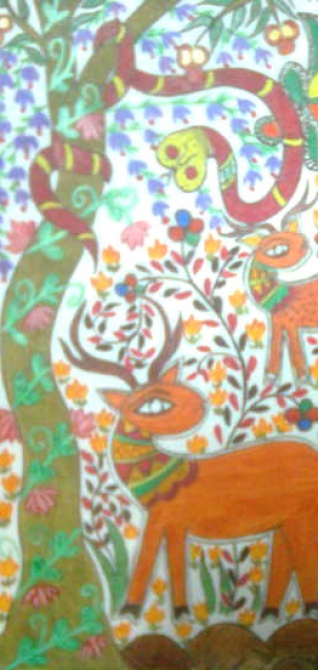Fiction
Reframing Our Mythologies
SHAUNA SINGH BALDWIN
In the Ramayan, the epic that permeates South Asian culture, Valmiki tells how the ten-headed demon Ravan abducted King Ram’s wife Sita to Sri Lanka. Hanuman’s monkey brigade led Ram to Ravan’s fort, where he vanquished the demon and rescued Sita.
In Homer’s Iliad, Paris abducted Helen and the Greeks launched a thousand ships and went in pursuit. Tales of the seige of Troy and the wrath of Achilles have us spellbound.
And according to the Bible, mortals Adam and Eve bit an apple against their creator’s wishes and fell from grace.
The ending of the Ramayan is usually good for hours of discussion about misogynist writing.
After traveling, battling, winning and rescuing Sita, Ram returned to Ayodhya. Then, unconcerned about any trauma-related stress Sita might feel, and suspicious that Sita may have slept with Ravan, he tested Sita with an ancient version of the Salem witch trials, by fire.
Sita emerged unscathed.
Yet, concerned about “what people will say,” the king banished her anyway. Obedient Sita asked the earth from whence she was born, to open up and swallow her; it helpfully does.
But what if we interpreted the epics for our times? Tales of “stupid” women being tempted away or abducted are devices that bring out a more interesting and cautionary theme -- how men can lose their feminine side.
The Ramayan isn’t my religious text, but the Sita ideal of unquestioning womanhood, [though a Hindu one], has seeped into my community, while the gift, responsibility and burden of wearing the turban rests almost entirely on Sikh men. In the virtual reality space of fiction, my women characters resist becoming like Sita.
In a reframed story, Ram sallies forth, overcomes Ravan and reunites with Sita, his feminine side. But, having acquired arrogance from victory instead of compassion for the weak and respect for feminine values of creating, nurturing, and connection, he rejects Sita again. Ram’s penalty for putting Sita on trial and leaving a pregnant woman destitute in a forest is to truly lose Sita. And by turning her into a single mother, his sons, Luv and Kush, become strangers to him.
At the end, the Ramayan equates Earth, women and creativity as the earth opens, taking Sita in, denying Ram her presence. But what if Sita’s action were told as a tale of how a woman can -- and when mistreated must -- withhold her self to retain her essential, independent self?
Reframing similarly, the Greeks in the Iliad go in quest of the feminine, and learn so little it takes Homer a whole Odyssey to show their reuniting.
Reframing the Bible myth, maybe Adam and Eve are still wandering in search of their initial connection to the creative (i.e., feminine) spirit. Maybe the Bible is saying women can be alienated from the creative spirit as easily as men.
Today South Asian women, particularly those of the diaspora, are becoming interested in a Sitayana -- the Ramayan told from Sita’s point of view. Modern interpretations of the Iliad and Bible are attempting the same. Hopefully, we can re-form and reframe traditional interpretations of our epics to include the feminine.
It’s time.
Shauna Singh Baldwin is the award-winning author of three novels, two collections of fiction and a work of non-fiction. Her most recent novel, The Selector of Souls, was recently published by Knopf Canada.
[Courtesy: National Post. Edited for sikhchic.com]
October 3, 2012
Conversation about this article
1: Gobinder Singh (USA), October 03, 2012, 5:46 PM.
I have often asked this question: If a guy kicks his pregnant wife out of the house for suspicion or under societal pressures, would you consider him a role model? The answer is always 'NO". The husband is, according to Ramayana, Ram himself. Most people do not know the ending or what happened after the fireworks of Dussehra!
2: N. Singh (Canada), October 04, 2012, 1:00 AM.
Quite frankly I don't think Sikh women need to become interested in a 'Sitayana' since we are not 'Sitas' but Kaurs. Sikh women (as well as men) just need to understand the true meaning of Kaur and the Guru's intent in naming them thus before they can come into their own. I have never aspired to be a Sita but I am trying to live up to being a Kaur - courageous and independent. I do not believe that my worth is tied to a man's value of me, only the Guru's value of me and my own self esteem.
3: Preet Lamba (Kolkata, India), October 26, 2012, 4:57 AM.
Glad to have read this piece. Nobody wants to speak about the feminine view. Sikhism teaches one to be courageous and independent; but in India, Sikhs may or may not allow the same for their women. Nice that one is able to write this in the West, and will naturally flow into India too. Sita and Kaur are different.




